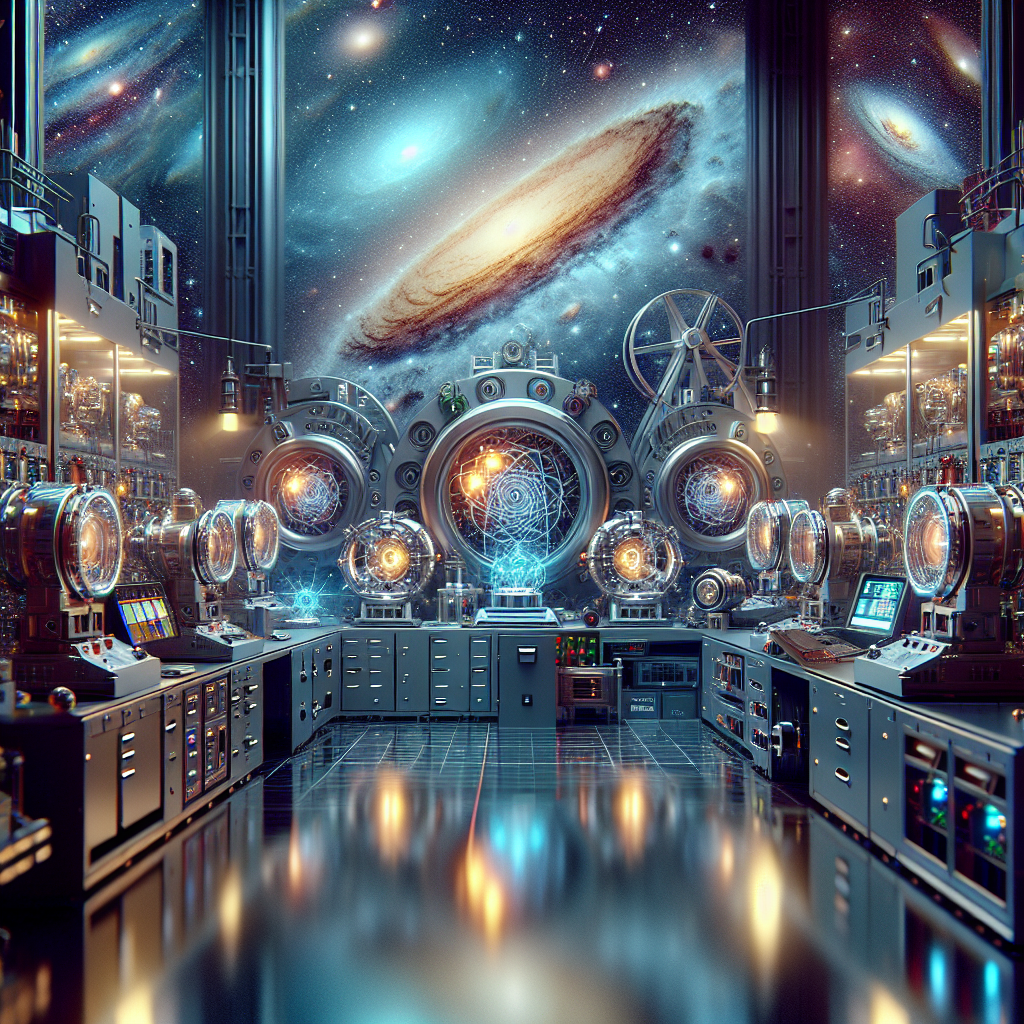Scientists have developed a compact gravitational wave detector that can explore milli-Hertz frequencies, an area untouched by current observatories. Utilizing advanced optical resonators and atomic clocks, these detectors are poised to reveal signals from exotic cosmic events and expand our understanding of the universe.
The Need for New Detection Technologies
Limitations of our current gravitational wave observatories such as LIGO and Virgo stem from their inability to detect waves in the milli-Hertz frequency range. These observatories excel at detecting higher frequency gravitational waves, typically above ten Hertz. They have made groundbreaking discoveries by identifying events like black hole mergers and neutron star collisions. However, the sensitivity of these detectors decreases significantly as the frequency drops below a few hertz.
The milli-Hertz frequency range is a band of frequencies from about 0.1 mHz to 1 Hz. Within this “mid-band” range lies a realm teeming with potential cosmic discoveries that currently elude our most advanced detectors. This unexplored territory holds the key to observing new types of cosmic events and deepening our understanding of the universe.
A significant limitation of LIGO and Virgo is their scale and susceptibility to environmental noise. They need to be immense in size and require constant control against vibrations due to ground movement, weather conditions, and human activity. As the gravitational wave signals they track are incredibly minute, even the slightest interference from seismic or human-induced noise can mask these signals. Detecting milli-Hertz waves adds another layer of complexity since at lower frequencies, seismic and Newtonian noise become even more intrusive. These limitations highlight a technological gap that demands new approaches in the instrumentation used for gravitational wave detection.
Addressing this gap with smaller, new-generation detectors is crucial for expanding the range of detectable frequencies. These detectors can pave the way to identify previously unseen or poorly understood astrophysical phenomena. One area of interest lies in the early inspiral phases of supermassive black hole binaries. The milli-Hertz wavelength could let researchers observe these massive objects long before they merge, offering new insights into their formation and evolution. Furthermore, exploring the milli-Hertz spectrum opens a window to study massive binary systems composed of white dwarfs or neutron stars in more detail. Observing these kinds of systems over prolonged periods can provide invaluable information about their dynamic interactions. This could reveal evolutionary paths leading to phenomena such as supernovae or the growth of supermassive black holes at galaxy centers.
Additionally, the milli-Hertz frequency range is vital for studying the very early universe. Primordial gravitational waves, thought to be produced due to high-energy physical processes in the first moments after the Big Bang, can permeate this frequency range. Detecting these signals would supply data about the physical conditions in the universe’s infancy, contributing to our understanding of cosmic inflation and matters of fundamental physics.
Creating detectors sensitive to these frequencies involves an array of innovative technologies. For instance, the new detectors aim to incorporate features like optical resonators coupled with advanced techniques such as atomic clocks. These innovations are aimed at circumventing the struggles faced by their predecessors. The optical resonators can improve signal extraction, while atomic clocks provide the type of time precision needed for capturing milli-Hertz-level fluctuations in spacetime.
The relevance extends beyond just the detection of traditional events. These advances can also serve cosmology and theories of quantum gravity. Some string theory models predict new massive pseudo-Goldstone bosons (axions) that might create signals detectable in the milli-Hertz spectrum. Finding such signals would lend empirical support to these models, potentially offering solutions to long-standing puzzles like the nature of dark matter.
These proposed detectors aim at filling the operational void left by existing observatories. Their ability to work in the milli-Hertz range marks a substantial leap forward, potentially leading to more robust models of galaxy formation and the evolution of cosmic structures. These smaller detectors can also offer resilience to the environmental factors that plague more extensive facilities.
Seismic isolation and immunity to vibrations are critical for capturing low-frequency waves. The innovative designs of these newer detectors aim to combat these issues effectively, thereby improving the sensitivity significantly. This could prove game-changing in recovering signals from deep space that would otherwise remain imperceptible amidst terrestrial noise.
The shift towards smaller, adaptable, and more advanced technology heralds a new era for gravitational wave astronomy. By targeting the milli-Hertz frequency range, these detectors promise to bridge crucial gaps, offering new insights and spiking an unprecedented expansion of cosmic horizons. Consequently, their deployment stands as an essential advance, ushering in possibilities for our understanding of the universe’s underexplored phenomena.
In the ever-evolving domain of astrophysics, technology has always been the enabler, expanding our capacity to probe the cosmos. These new gravitational wave detectors seek to achieve precisely that by addressing deficiencies in existing technology. By targeting the elusive milli-Hertz frequency range, they offer a glimpse into an arena abundant with opportunities for discovery—a realm alive with potential for science yet to unfold.
For those interested in the broader implications of gravitational forces, examining the universe’s mysterious forces can enrich your understanding of these concepts further. As innovations in detection technology unfold, they promise to write a new chapter in the science of gravitational waves, bridging technology with tantalizing celestial mysteries.
Innovative Design of the New Detectors
The innovative design of the new gravitational wave detectors represents a leap forward in technology, particularly focusing on overcoming previous limitations associated with detecting gravitational waves in the milli-Hertz range. At the heart of these new detectors are two key technologies: optical resonators and atomic clocks, each contributing significantly to enhancing the sensitivity and accuracy of gravitational wave detection.
The compact nature of the new detectors marks a stark contrast to the massive structures of preceding observatories, such as LIGO and Virgo. These existing observatories rely on long, kilometer-scale arms to measure minuscule distance changes caused by passing gravitational waves. The new approach employs optical resonators, which enhance the phase sensitivity of laser light. By circulating lasers within a small optical cavity, these resonators amplify the interaction path without the need for expansive physical arms. This not only reduces the physical footprint of the detectors but also significantly cuts the cost and complexity involved in construction and deployment.
A crucial innovation comes from integrating atomic clocks into the design. Atomic clocks provide unprecedented precision in timing measurements due to their stable oscillation frequencies, rooted in quantum mechanics. This allows for ultra-precise tracking of time shifts caused by gravitational waves, especially in the milli-Hertz frequency band. By leveraging optical lattice clocks, the detectors can maintain synchronization across many points, improving data integrity and reducing noise interference.

Noise reduction is another vital area where these detectors shine. Seismic and Newtonian noise have posed significant challenges for gravitational wave observatories. Even tiny ground vibrations can disrupt the minute measurements required. The new detectors are significantly more resilient to such disturbances. Their smaller size inherently offers less surface area for seismic waves to impact. Moreover, advanced noise-filtering techniques and isolation systems are integrated within the detectors, allowing them to operate effectively even in less controlled environments.
In addition, these detectors are equipped with advanced algorithms powered by machine learning techniques. These algorithms help distinguish between actual gravitational wave signals and potential noise, providing a cleaner and more accurate signal processing method. This addresses one of the primary limitations of current observatories, which often encounter difficulties in differentiating between genuine signals and terrestrial noise.
These advancements not only enhance detection capabilities but also offer greater flexibility in installation sites. The compact size and robustness against noise make it feasible to deploy these detectors in various global locations, including those previously deemed unsuitable due to noise levels. This geographical flexibility aligns with the potential to form a global network of detectors, which will be explored in the next chapter as part of their broader implications.
In comparison to LIGO and Virgo, the new detectors represent a paradigm shift. While the larger, existing detectors are constrained by their reliance on extensive infrastructure and susceptibility to local environmental noise, these new units offer more versatility. They enable the exploration of the milli-Hertz frequency range, which houses a rich field of undiscovered astrophysical phenomena. By bridging the gap in current detection technologies, these detectors pave the way for groundbreaking discoveries related to cosmic events like merging supermassive black holes and neutron star interactions.
Ultimately, the revolutionary design of these new gravitational wave detectors demonstrates immense potential in overcoming the technological limitations faced by existing observatories. They epitomize how advancements in quantum technology and engineering can transform the field of gravitational wave astronomy, unlocking a deeper understanding of the universe. For those interested in the conceptual foundation of such cutting-edge technologies, the interplay between quantum mechanics and innovations like atomic clocks is a topic of ongoing discussion, as illustrated in this exploration of unifying quantum gravity.
Future Implications and Global Impact
Advancements in gravitational wave detection have opened a new frontier in astrophysics and cosmology. The recent development of more compact detectors, capable of measuring faint ripples in the fabric of spacetime, promises to revolutionize our understanding of the universe. These tiny detectors not only enhance our capabilities in detecting gravitational waves but also hold immense potential for future scientific breakthroughs that could redefine the landscape of astronomy.
The promise of these compact detectors lies in their ability to achieve precise measurements unachievable by larger, terrestrial observatories. Due to their small size and advanced technology, such as optical resonators and atomic clocks, these detectors excel in detecting gravitational waves in the milli-Hertz range. This range is particularly significant as it encompasses a variety of cosmic processes that remain relatively unexplored. For instance, compact systems of supermassive black holes, which are not easily detectable with current instruments, could now be studied with unprecedented precision.
The scientific world is abuzz with how a global network of these tiny detectors could potentially be established. By having these devices distributed worldwide, we would gain a multi-perspective approach to gravitational wave detection. This network could act as an integrated system that compensates for the limitations of individual detectors, such as orientation and sensitivity variances due to geographic location. By working in unison, these detectors could deliver more accurate data, significantly improving the precision of locating gravitational wave sources and comprehending their origins.
In considering the broader implications, such a global network might complement and enhance future space missions like the Laser Interferometer Space Antenna (LISA). While LISA aims to measure gravitational waves from a space-based vantage point, complementing these measurements with data obtained from Earth-based detectors could fill vital gaps. The synergy between ground-based networks and missions like LISA stands to deepen our understanding of phenomena such as binary black holes and neutron star mergers.
Focusing on immediate scientific benefits, these detectors provide new opportunities to study the formation and evolution of cosmic structures. Observations made possible by these advanced detectors could unravel mysteries of the early universe, offering insights into community questions about dark matter and energy. For instance, by tracing the cosmic dance of black holes merging or shedding light on the birth of neutron stars, scientists can begin to refine existing models of cosmic evolution.
Another promising application lies in the pursuit of new physics. Gravitational waves offer a unique lens through which to validate or challenge the framework of general relativity. These waves carry information regarding the strong-field dynamics of gravity, and deviations from expected patterns could prompt a reevaluation of Einstein’s theory in new realms. As a discipline, gravitational wave astronomy is poised to intersect more closely with quantum mechanics, informing future unified theories.
This advancement in detection technology promises more than just exploration. The impact on gravitational wave astronomy is profound, rendering theories and previously conceptual hypotheses observable. With a higher frequency of gravitational wave events becoming detectable, researchers can deploy more robust simulations and improve predictive models. In particular, the ability to detect repeated waves from known systems supports continuous monitoring, allowing scientists to test hypotheses about energy emission and absorption with greater detail and confidence.
These newfound capabilities could also contribute to the burgeoning interest in understanding the interplay between quantum phenomena and gravitational waves. For example, exploring this interaction might unlock new potential in quantum computing technologies. Quantum mechanics’ principles can inform the interpretation of gravitational waves, highlighting potential areas for exploration and application in both fields.
Given the implications, it is vital that research and development in this area continue unabated. The very nature of scientific inquiry demands the iterative refinement of technologies, alongside exploration of new ideas. By investing in the development of gravitational wave detection, we sow the seeds for continued progress in our quest to decode the universe. As technology advances alongside our understanding, the horizons for discovery will only continue to broaden, heralding a golden age in scientific exploration and enrichment. Just as the invention of the telescope revolutionized our understanding of the cosmos, these tiny detectors stand as the next leap forward in humanity’s ability to perceive the very essence of the universe.
The integration and realization of new gravitational wave detectors represent a monumental shift in the field of astrophysics. Straddling the line between precision engineering and theoretical physics, these detectors are poised to make revolutionary contributions to our understanding of the cosmos. As we look towards the future, embracing these transformative technologies seems crucial to unraveling the mysteries that lie beyond our current grasp. The dawn of a new era of gravitational wave astronomy awaits, beckoning with the promise of discovery and insight.
In the same vein of transformative potential, quantum considerations in gravitational wave detection yield exciting avenues for research. An intriguing intersection lies in the domain of quantum computing and advanced imaging techniques, promising a fusion of technologies that could redefine our grasp of quantum mechanics and gravitational waves. By delving further into these interdisciplinary explorations, we stand on the cusp of numerous scientific breakthroughs.
Final words
The advent of compact, milli-Hertz gravitational wave detectors marks a significant progression in astrophysics. These cost-effective tools promise immediate insights into cosmic phenomena that would otherwise remain inaccessible until future space missions. By partnering with existing technologies, they stand to considerably enhance our understanding of the universe.
References
Giovanni Barontini, Xavier Calmet, Vera Guarrera, Aaron Smith, Alberto Vecchio. Detecting milli-Hz gravitational waves with optical resonators. Classical and Quantum Gravity, 2025; 42 (20): 20LT01 DOI: 10.1088/1361-6382/ae09ec


